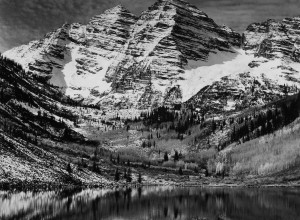Getty Museum Announces Landmark Acquisition of the Rothschild Pentateuch
Los Angeles - The J. Paul Getty Museum announced today the acquisition of the Rothschild Pentateuch, the most spectacular medieval Hebrew manuscript to become available in more than a century. The acquisition was made possible with the generous support of Jo Carole and Ronald S. Lauder.
“The Rothschild Pentateuch will be the greatest High Medieval Hebrew manuscript in the United States, and one of the most important illuminated Hebrew Bibles of any period,” says Timothy Potts, director of the J. Paul Getty Museum. “Its richly illuminated pages - a great rarity in the thirteenth century - make it a work of outstanding quality and importance that represents the pinnacle of artistic achievement of its day. It will be one of the most signal treasures of the Department of Manuscripts and indeed of the Getty Museum overall.”
Potts adds: “It is especially gratifying that this landmark acquisition was generously supported by our Trustee Ronald S. Lauder and his wife, Jo Carole.”
Created by an unknown artist and dated 1296, the manuscript’s pages are filled with lively decorative motifs, hybrid animals and humanoid figures, and astonishing examples of micrography--virtuosic displays of tiny calligraphy in elaborate patterns and designs. The vibrant colors and gleaming gold distinguish this manuscript from most medieval Hebrew book production, which followed a largely textual tradition. It stands apart from other medieval examples through the appeal and extent of its illustrated program. The text contains features that indicate it may have been written in France for Jewish emigres who had been expelled from England in 1290. The illumination was likely completed in France or Germany.
The Pentateuch contains the central sacred text of Judaism--the Torah in the strictest sense--comprising the Five Books of Moses: Genesis, Exodus, Leviticus, Numbers, and Deuteronomy. The manuscript’s lavish illumination divides the text into sections to be read weekly so that the entire Torah would be read over the course of a year. The opening of each of the five books is celebrated with monumental Hebrew initials intertwined with lively marginal figures and, in one case, a full-page illumination.
With its seemingly endless variety of illuminated motifs ranging from the imposing to the whimsical, the Rothschild Pentateuch is a prime example of the heights of originality and magnificence that Hebrew illumination achieved and stands as the most extensive illuminated program of any northern European Hebrew Bible to survive from the Middle Ages.
In a rare deviation from the rest of the manuscript’s aniconic approach, there is one illumination featuring full human figures that was added at a later date. In the second half of the fifteenth century one page was replaced with a new insertion, carefully replicating the text and commentaries. The folio can be identified as the work of Joel ben Simeon, one of the most celebrated Jewish artists known from the period. The replacement miniature represents the sole figural narrative in the Rothschild Pentateuch, but was inspired with the same kind of ingenuity that characterizes the rest of the manuscript.
“This acquisition allows us to represent the three Abrahamic religions of the period, and for the first time brings a medieval Hebrew illuminated manuscript to the Los Angeles area,” says Elizabeth Morrison, senior curator in the Manuscripts Department. “The cohesiveness of the visual program combined with its unbounded ingenuity shows how medieval artisans approached the complex problem of page design and tackled a project as ambitious as the Rothschild Pentateuch.”
The Rothschild Pentateuch was created in 1296 perhaps for a patron originally from England. It was carried through the centuries from France or Germany to Italy and Poland, and was eventually acquired by Baroness Edmond de Rothschild at some point before 1920, and then given after World War II to a German-Jewish family, who later settled in Israel, as a part of an exchange agreement.
Adds Morrison, “The storied voyage of this manuscript follows the history of the Jewish diaspora across time and space. This newest addition to our collection will allow us to present a more inclusive story of the Middle Ages at a time when the Getty is increasingly looking to a global approach in the visual arts.”
The Rothschild Pentateuch will make its debut at the Getty Center in Art of Three Faiths: A Torah, a Bible, and a Qur’an on view August 7, 2018 to February 3, 2019, an exhibition showcasing for the first time the sacred texts of Judaism, Christianity, and Islam. The practitioners of these three faiths have been called people of the book for their shared belief in the importance of divine word, rendered in medieval manuscripts in glowing gold and luminous colors on parchment. Three spectacular examples from the Getty’s permanent collection, including a Christian Bible and a Qur’an together with the newly acquired Torah, will be featured in this spotlight show.














